What is Swamp Ash? Technically, Swamp Ash is not a species of wood but a term for Ash that has grown along rivers, streams, creeks, bogs, and… swamps! Its roots are underneath the water table so the wood is super light. It is lighter weight than the Ash lumber produced by trees growing around less moisture. Us guitar guys and gals like it because it is lighter in weight than the stuff used for baseball bats and bowling pins. We mostly know it as a tonewood used for solid body Fender Guitars, though as of 2020, Fender is planning on slowing down the usage of this wood to help its resurgence.
Here is a Green Ash or Swamp Ash tree

Other common kinds of Ash are Black, White, Blue, Green (sometimes called Swamp Ash), and Tamo, There are also many other trees that produce lumber that looks very similar to Ash. Sassafras, Catalpa, and even some Alder can easily be confused for Ash.
Swamp Ash is mainly associated with Solid Body, Fender Guitars, in particular, the Telecaster but also early Stratocasters. Swamp Ash is not used for necks, fingerboards, or for acoustics guitars.
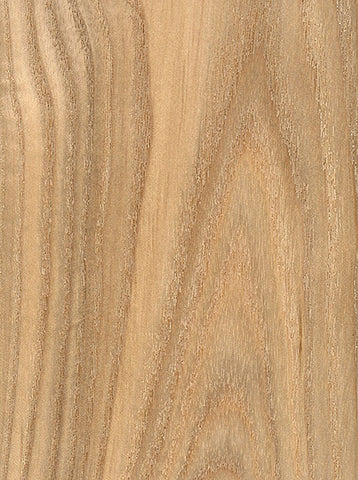
Visually: Ash can produce some striking grain patterns or it can be very straight grained and pretty plain. The Swamp Ash is known for producing more interesting patterns such as Cathedral’s, Arches, Oval’s, and Ellipses. When you see a Fender with a Sunburst body, if there are well-defined grains that run in waves/groups/move together, it’s most likely Swamp Ash you are looking at.
Tight Cathedral, Wide Cathedral, and an Ellipse

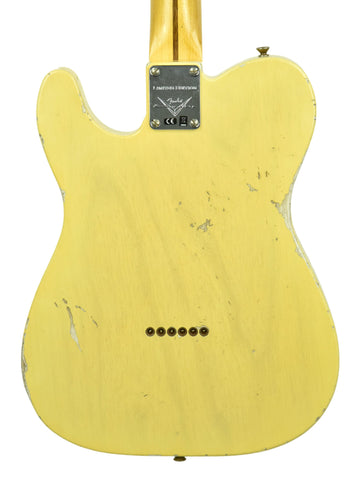
Janka Hardness Rating: Unfortunately, I can’t locate a number on this species and the reason is that Swamp Ash varies so greatly. White Ash is as 1320, Black Ash at 850, most others seem to fall somewhere between. From what I have read, it’s a safe bet to place an average piece of swamp ash in the 850-1000 range but this is a topic that is still up for debate.
Tone: Really only for solid body guitars, Ash is considered to be very resonant and rather bright, especially when paired with single-coil pickups. Swamp Ash is resonant across all frequencies but due to a slightly scooped midrange, the highs are a bit more noticeable. Swamp Ash offers a percussive quickness when flat-picked hard and balanced sweetness when fingerpicked with a light touch. The dynamic range of this tonewood is superb. We have seen a Humbucker loaded Gibson or 2 made out of Swamp Ash and they were remarkable. Less cloudy sounding, a more open top end, and super lightweight.
A PRS Private Stock, a Nik Huber, and a Gibson Les Paul Studio
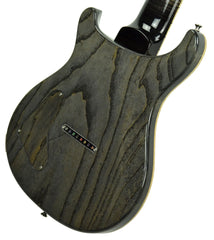

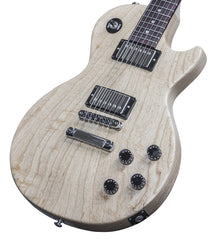
Side Notes: Fender started using Alder instead of Ash towards the late 1950s as Alder is easier to come by, cheaper, and doesn’t need to be grain or pore filled, making it a little less involved on the production end. Ash often gets a transparent finish so that it’s grain is able to peek through, adding dimensional layers to the look. Our 1 Piece Ash Body Tele Relic’s are a prime example of the best Swamp Ash that the Fender Custom Shop has to offer. Some of the most beautiful Tele’s we have ever seen are part of that Music Gallery Exclusive Collection and we truly hope to see more of them down the road. However, harvesting of this wood has recently led Fender to decide to considerably reduce the amount of Swamp Ash they are using moving forward. So, time will tell! Let’s hope that some conservation efforts now make things much smoother a few years down the road and we can get back to using this amazing tonewood!
This edition of the Music Gallery Glossary of Guitar Terms was penned by Mathew Jenkins, a real Ash-hole! :)

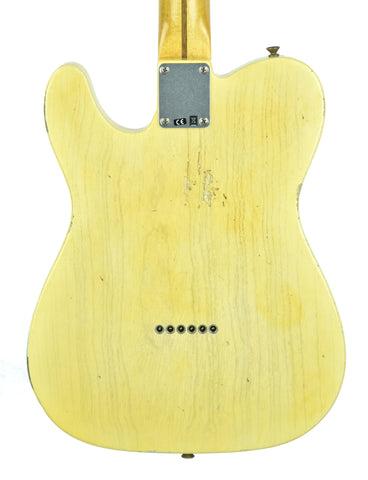
Swamp Ash is a great wood, but the up-charge is getting out of hand. Some wood retailers and builders charge more for Swamp Ash than imported exotic rare varieties of Mahogany! Meanwhile Swamp Ash used to be some of the cheapest commercially available hardwood lumber, because it grows very fast in wetlands. Yet thanks to the Emerald Ash Borer beetle decimating many varieties of North American Ash trees, and the growing cycle in wetlands messed up due to growing season and climate shifts, it is a wood that has to be managed better to remain commercially viable. Keeping Swamp Ash around is doable, but will take effort on the part of forestry and timber management folks.
I have a stand in Northern Ontario and purchased a sawmill to cut them. I would assume they should be quarter sawn, however the pictures I see are usually flat sawn.
I have an sx Telecaster of swamp.ash with two single coil pickups and it has a amazing tone and great to play